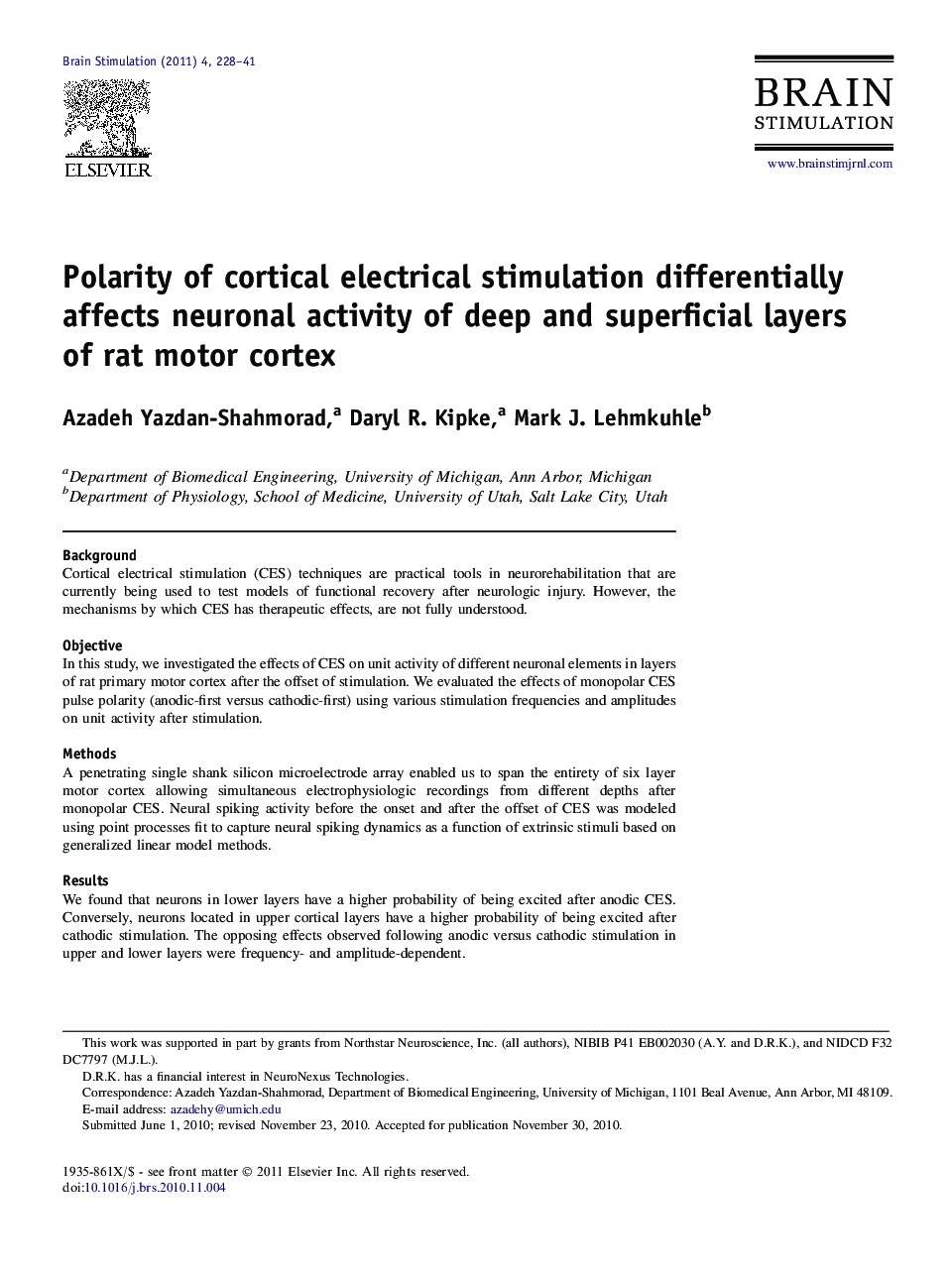| Article ID | Journal | Published Year | Pages | File Type |
|---|---|---|---|---|
| 3038850 | Brain Stimulation | 2011 | 14 Pages |
BackgroundCortical electrical stimulation (CES) techniques are practical tools in neurorehabilitation that are currently being used to test models of functional recovery after neurologic injury. However, the mechanisms by which CES has therapeutic effects, are not fully understood.ObjectiveIn this study, we investigated the effects of CES on unit activity of different neuronal elements in layers of rat primary motor cortex after the offset of stimulation. We evaluated the effects of monopolar CES pulse polarity (anodic-first versus cathodic-first) using various stimulation frequencies and amplitudes on unit activity after stimulation.MethodsA penetrating single shank silicon microelectrode array enabled us to span the entirety of six layer motor cortex allowing simultaneous electrophysiologic recordings from different depths after monopolar CES. Neural spiking activity before the onset and after the offset of CES was modeled using point processes fit to capture neural spiking dynamics as a function of extrinsic stimuli based on generalized linear model methods.ResultsWe found that neurons in lower layers have a higher probability of being excited after anodic CES. Conversely, neurons located in upper cortical layers have a higher probability of being excited after cathodic stimulation. The opposing effects observed following anodic versus cathodic stimulation in upper and lower layers were frequency- and amplitude-dependent.ConclusionsThe data demonstrates that the poststimulus changes in neural activity after manipulation of CES parameters changes according to the location (depth) of the recorded units in rat primary motor cortex. The most effective pulse polarity for eliciting action potentials after stimulation in lower layers was not as effective in upper layers. Likewise, lower amplitudes and frequencies of CES were more effective than higher amplitudes and frequencies for eliciting action potentials. These results have important implications in the context of maximizing efficacy of CES for neurorehabilitation and neuroprosthetic applications.
